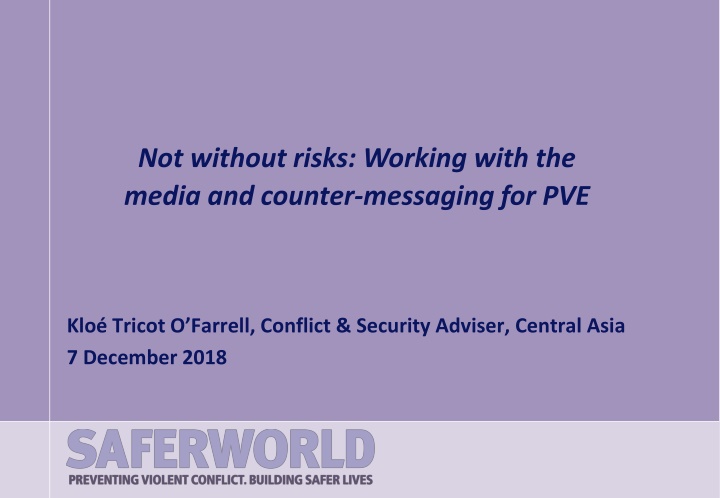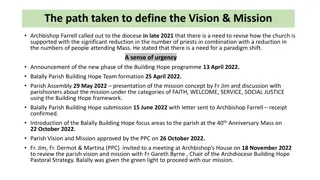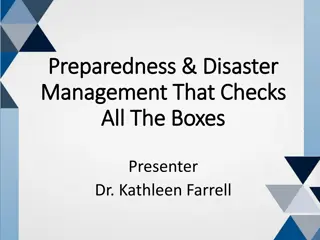
Risks and Strategies in PVE Counter-Messaging
Explore the risks involved when working with the media for PVE counter-messaging, along with strategies to shift towards promoting dialogue and trust in communications. Discover how actions speak louder than words in improving lives.
Download Presentation

Please find below an Image/Link to download the presentation.
The content on the website is provided AS IS for your information and personal use only. It may not be sold, licensed, or shared on other websites without obtaining consent from the author. If you encounter any issues during the download, it is possible that the publisher has removed the file from their server.
You are allowed to download the files provided on this website for personal or commercial use, subject to the condition that they are used lawfully. All files are the property of their respective owners.
The content on the website is provided AS IS for your information and personal use only. It may not be sold, licensed, or shared on other websites without obtaining consent from the author.
E N D
Presentation Transcript
Not without risks: Working with the media and counter-messaging for PVE Klo Tricot O Farrell, Conflict & Security Adviser, Central Asia 7 December 2018
A. The risks posed by C/PVE 1. It ignores the problematic agendas and behaviours of certain actors; 2. It focusses on certain issues; 3. It seeks to establish simplistic causal links to achieve a narrow objective; 4. In spite of the name, it is more about reaction than prevention
B. The problems with counter-messaging 1. It is difficult to develop messages and narratives which resonate and reach target audiences; 2. It can reinforce people s beliefs and create anger; 3. It can stigmatise, foment division and cement repression; 4. It tends to close and control the debate; 5. It puts local partners in a difficult position; 6. It distracts from what is really needed: improving people s lives.
C. What can be done? 1. Shift from top down messaging to promoting dialogue and listening to concerns; 2. Ensure people can trust your communications: Information should be objective and grounded in evidence; Information should be shared to benefit the people receiving it, not to better control them; Don t make promises you can t keep; Peace education is important, seeing it work in practice even more so 3. Actions speak louder than words: focus on improving people s lives
! www.Saferworld.org.uk ktricotofarrell@saferworld.org.uk


